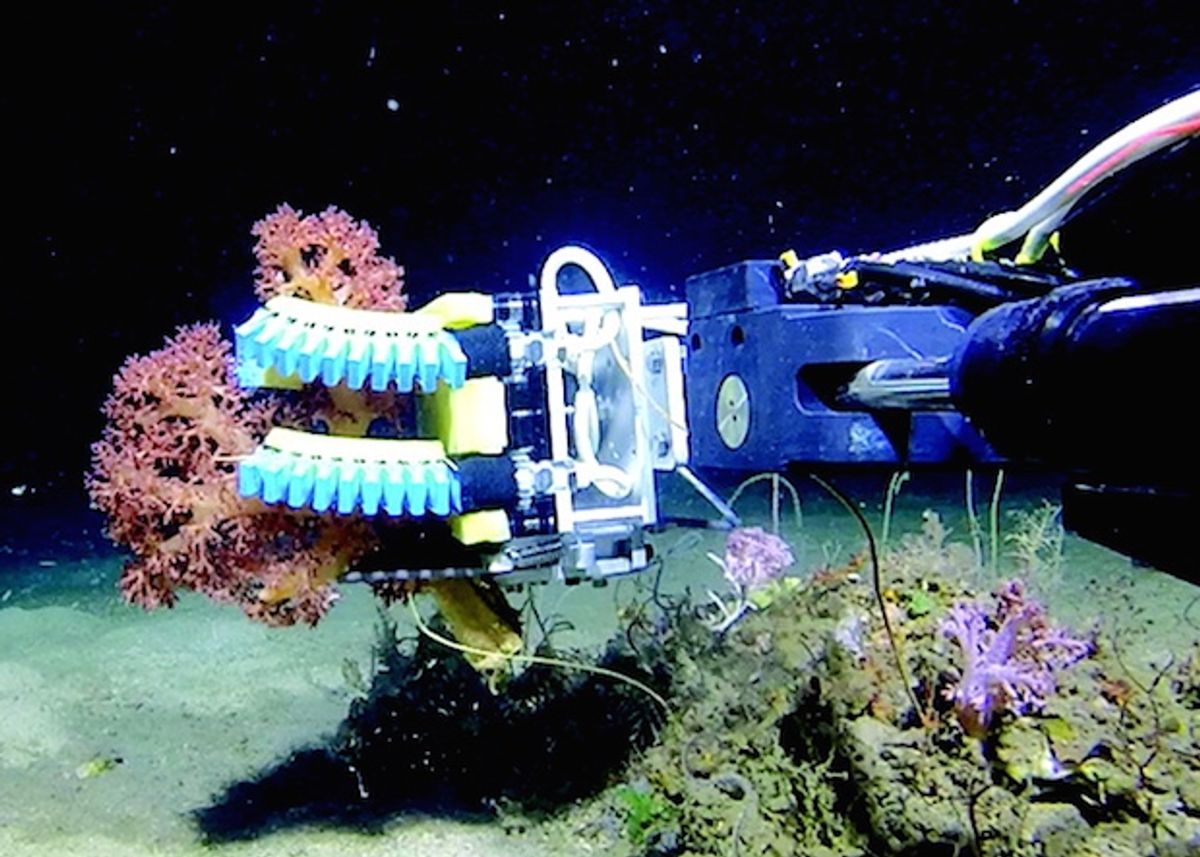The best part about scuba diving is being able to see all kinds of amazing animals, plants, animals that looks like plants, and plants that look like animals. The worst part about scuba diving is not being able to squidge any of these things. I mean, don’t you just want to give this thing a great big hug? Or this thing? Or especially this thing?
While it’s unlikely that me personally hugging any of these adorable creatures will ever be a good idea (however much I was seriously considering it while taking those pics), it is occasionally important for sea creatures to be aggressively groped in the name of science. Researchers at Harvard have endowed undersea robots with some squishy robotic fingers that allow them to non-destructively collect underwater specimens from under da sea. What more is you looking for?

Custom-made deep sea sampling robots and submarines use what are basically underwater vacuum cleaners to suck up fragile samples, which works pretty well. For economy-class ROVs, you’re usually stuck with leftover robotic arm and hand hardware from the oil and gas industry. This is literally overkill for sampling soft corals and sponges, in that the rigid hands shred biological samples to bits.
Robert J. Wood and Kevin Galloway from Harvard, along with colleagues from University of Rhode Island, City University of New York, and Haifa University, Israel, knew that they could do better, using (relatively) inexpensive yet versatile soft robotics techniques to construct a few different sets of squishy grippers:
The biggest design challenge, Wood said, was a lack of precise specifications. They weren’t designing a robotic arm to repetitively attach doors to car bodies in an auto assembly plant. The team had no way of knowing the size, shape, or stiffness of the objects they would be sampling on the ocean floor. To approximate likely specimens, they visited the produce aisle and brought back an assortment of vegetables – celery, radishes, carrots, bok choy – tied them to a metal grate, and dropped it into a test tank at the University of Rhode Island. After exhaustive tank tests, the devices were put through their paces at depths greater than 800 meters off the Rhode Island coast.
Here’s another video with more detailed footage of the sampling of various corals:
As an avid diver, I was cringing a little bit when I saw what the video was calling “non-destructive sampling.” I buy it for that first specimen of soft coral, but those other two corals were, strictly speaking, more than a little bit destroyed. But, you know, for science, and all that.

The grippers themselves work well enough, but the sampling technique could be improved, since it’s just oceanographers peering at monitors and remotely groping at stuff. The soft grippers can incorporate haptic feedback, which would help this non-destructive sampling be significantly less destructive. The study was funded by the National Geographic Society, and in future experiments the researchers hope to test dual arms on robots that can go down 20,000 feet under the sea.
Evan Ackerman is a senior editor at IEEE Spectrum. Since 2007, he has written over 6,000 articles on robotics and technology. He has a degree in Martian geology and is excellent at playing bagpipes.



